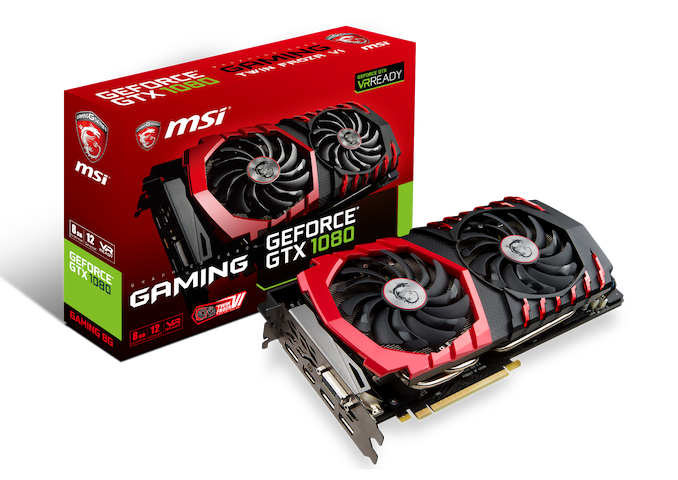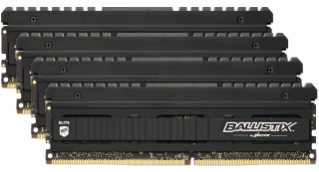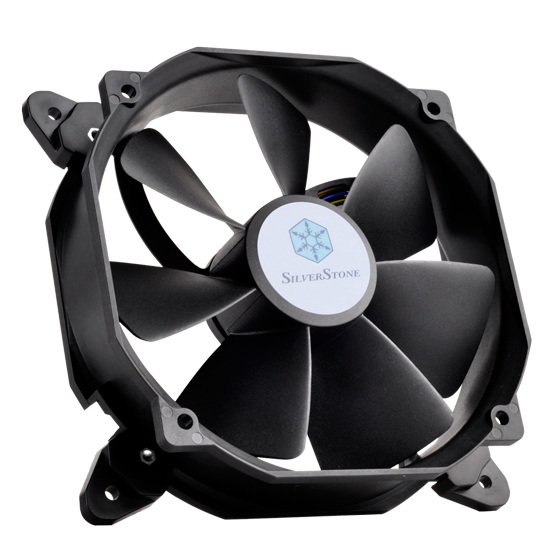The GIGABYTE MW51-HP0 Motherboard Review: Consumer Meets Workstation for Xeon W
by Gavin Bonshor on March 6, 2019 9:30 AM EST- Posted in
- Motherboards
- Intel
- Gigabyte
- Workstation
- server
- Xeon-W
- C422
- MW51-HP0
Board Features
At a high leve, the MW51-HP0 offers workstation features in an extensive CEB-sized package. Notably, the board is armed with a Broadcom PEX8747 PLX chip, which allows users to install up to four dual slot PCIe 3.0 x16 cards, or alternatively up to seven single slot cards. In this configuration the top slot always runs at x16, and the remaining six slots at x8.
A now aging Realtek ALC1150 HD audio codec proves the onboard audio, while a pair of Intel I210-AT GbE NICs provide the boards networking capabilities. Somehow GIGABYTE has managed to fit a single M.2 slot onto the stacked PCB with support for PCIe 3.0 x4 drives up to a size of M.2 22110 and allows users to use mini SAS hard drives via a U.2 connector. A total of ten SATA ports are present with two ports controlled by a Marvel 88SE9172 SATA controller which allow allows for two SATA DOM devices. The MW51-HP0 is also compatible with backplanes thanks to two SATA SPGIO connectors.
| GIGABYTE MW51-HP0 CEB Motherboard | |||
| Warranty Period | 3 Years | ||
| Product Page | Link | ||
| Price | $570 | ||
| Size | CEB | ||
| CPU Interface | LGA2066 | ||
| Chipset | Intel C422 | ||
| Memory Slots (DDR4) | Eight DDR4 Supporting 64 GB RDIMM & 128 GB LRDIMM Quad Channel Up to DDR4-2666 1.2 V |
||
| Video Outputs | N/A | ||
| Network Connectivity | 2 x Intel I210 (1 GbE) | ||
| Onboard Audio | Realtek ALC1150 | ||
| PCIe Slots for Graphics (from CPU) | 7 x PCIe 3.0 x16 (64 lanes total) | ||
| PCIe Slots for Other (from PCH) | N/A | ||
| Onboard SATA | Eight, RAID 0/1/5/10 with 2 x SATA DOM (Intel) Two, RAID 0/1/5/10 (Marvel 88SE9172) |
||
| Onboard M.2 | 1 x PCIe 3.0 x4 (M.2 2242-22100) | ||
| Onboard U.2 | 1 x U.2 | ||
| USB 3.1 (10 Gbps) | 1 x Type-A Rear Panel 1 x Type-C Rear Panel (5V/3A) |
||
| USB 3.0 (5 Gbps) | 8 x Type-A Rear Panel 2 x Header (four ports) |
||
| USB 2.0 | 1 x Header (two ports) | ||
| Power Connectors | 1 x 24-pin ATX 2 x 8-pin CPU 1 x 6-pin PCIe 1 x DDR 12 V |
||
| Fan Headers | 1 x CPU (4-pin) 5 x System (4-pin) |
||
| IO Panel | 1 x USB 3.1 Gen2 Type-A 1 x USB 3.1 Gen2 Type-C 8 x USB 3.1 Gen1 Type-A 2 x Network RJ45 (Intel) 5 x 3.5mm Audio Jacks (Realtek) 1 x S/PDIF Output (Realtek) 1 x PS/2 |
||
A total of six 4-pin fans headers are located around the board, with one dedicated to the CPU and the remaining five to chassis fans. Other onboard connections include two USB 3.1 G1 front panel headers offering four ports and single USB 2.0 header allowing for two ports. On the rear panel is a further ten USB ports split between two USB 3.1 G2 (Type-A and Type-C) and eight USB 3.0 Type-A ports. The MW51-HP0 also includes plenty jumpers including a clear CMOS jumper next to the BIOS battery, a BIOS recovery jumper, a Force ME update jumper, as well as a PMBus connector and two thermistor cable connectors.
Test Bed
As per our testing policy, we take a high-end CPU suitable for the motherboard that was released during the socket’s initial launch, and equip the system with a suitable amount of memory running at the processor maximum supported frequency. This is also typically run at JEDEC subtimings where possible. It is noted that some users are not keen on this policy, stating that sometimes the maximum supported frequency is quite low, or faster memory is available at a similar price, or that the JEDEC speeds can be prohibitive for performance. While these comments make sense, ultimately very few users apply memory profiles (either XMP or other) as they require interaction with the BIOS, and most users will fall back on JEDEC supported speeds - this includes home users as well as industry who might want to shave off a cent or two from the cost or stay within the margins set by the manufacturer. Where possible, we will extend out testing to include faster memory modules either at the same time as the review or a later date.
| Test Setup | |||
| Processor | Xeon W-2155 | ||
| Motherboard | GIGABYTE MW51-HP0 (BIOS F9) | ||
| Cooling | Corsair H110i 240mm AIO | ||
| Power Supply | Thermaltake Toughpower Grand 1200W Gold PSU | ||
| Memory | Kingston 4x8GB DDR4 2666 CL19-19-19-443 RDIMM (KSM26RS8/8HAI) |
||
| Video Card | ASUS GTX 980 STRIX (1178/1279 Boost) | ||
| Hard Drive | Crucial MX300 1TB | ||
| Case | Open Benchtable BC1.1 (Silver) | ||
| Operating System | Windows 10 RS3 inc. Spectre/Meltdown Patches | ||
Readers of our motherboard review section will have noted the trend in modern motherboards to implement a form of MultiCore Enhancement / Acceleration / Turbo (read our report here) on their motherboards. This does several things, including better benchmark results at stock settings (not entirely needed if overclocking is an end-user goal) at the expense of heat and temperature. It also gives, in essence, an automatic overclock which may be against what the user wants. Our testing methodology is ‘out-of-the-box’, with the latest public BIOS installed and XMP enabled, and thus subject to the whims of this feature. It is ultimately up to the motherboard manufacturer to take this risk – and manufacturers taking risks in the setup is something they do on every product (think C-state settings, USB priority, DPC Latency / monitoring priority, overriding memory sub-timings at JEDEC). Processor speed change is part of that risk, and ultimately if no overclocking is planned, some motherboards will affect how fast that shiny new processor goes and can be an important factor in the system build.
Many thanks to...
We must thank the following companies for kindly providing hardware for our multiple test beds. Some of this hardware is not in this test bed specifically, but is used in other testing.


















33 Comments
View All Comments
colonelclaw - Wednesday, March 6, 2019 - link
The lack of 10GB Ethernet mars what is otherwise an attractive bit of kit, both technically and aesthetically.imaheadcase - Wednesday, March 6, 2019 - link
Well since this board is not for %99 of readers on this site, its more than likely if you are spending that much for a board you going to get stand alone NIC for that. Anandtech likes to for some reason review stuff now that is business/IT/Phone related more than consumer stuff.Kevin G - Wednesday, March 6, 2019 - link
Big consumer stuff has, well slowed down. Sky Lake was released 3.5 years ago and since then Intel has boosted clocked, bumped up core counts and polished the chipset. AMD released Ryzen which got lots of coverage but the Zen+ refresh was mainly polishing off the first release. Zen 2 is still a little bit away so news will at least pick up on the consumer CPU side soon.The GPU side of things hasn't been that exciting as AMD and nVidia are seemingly content where they are in the market. The mining boom shifted prices upward which neither company is eager to reverse. The GTX 1660 Ti is actually a fairly big thing for consumers but that level of performance could be had years ago if you had the cash back then for a high end card. AMD's Navi will be another step forward for consumer but again will be over shadowed by the previous generation of highend hardware that carried higher prices.
I hope the next big thing is a wider product line up of gaming displays now that HDMI 2.1 has adopted variable refresh rate support, nVidia supports Freesync displays (soft of) and Intel will finally be adding Freesync support too. Things are lining up for this to go mainstream. Though much like CPU and GPU news, variable refresh rate support has been around for years on other hardware.
I see 2.5 and 5 Gbit hardware taking of on the consumer side along with 802.11ax (Wifi 6) enabled devices. Wireless is starting to move beyond a gigabit of bandwidth so the wired side of connectivity also has to evolve. Though it feels odd celebrating the release of 2.5 and 5 Gbit speeds when 10 Gbit has been around for years.
If you want a real wide guess of what the next big consumer thing will be that really hasn't spread in the high end yet would be network based audio transport. Stuff like PoE enabled network speakers that integrate with other smart home devices. Stuff like this exists on the professional side of things but even there you'd have to look for it.
gavbon - Friday, March 8, 2019 - link
Prosumer boards serve a purpose just as much as consumer desktop boards. I personally like focusing on consumer boards, but when I get asked to look at workstation boards, it makes a nice change!PeachNCream - Friday, March 8, 2019 - link
I would question the accuracy of the 99% statistic regarding readers. While I am myself a consumer as an individual, my profession is in enterprise computing and networking so products outside of the consumer space are of an interest to me as much as are consumer electronics. I think quite a few of us are in a similar state, working in information technology and reading to stay caught up on broader developments. Sure, individual workstation motherboards are a bit of an oddity as most workstations are major muscle movement purchases that are acquired from hardware company like HP or Dell, but they are still relevant so I'm happy to see them getting a little word count now and then.CheapSushi - Thursday, March 7, 2019 - link
Not even 10GB but 2.5G and 5G at least, especially now that controllers are more affordable. 2.5G should be basically standard now in 2019.Kevin G - Wednesday, March 6, 2019 - link
Typo on the first page:"A total of eight DDR4 channels are present and allow users to run memory in quad-channel memory mode"
I believe you mean eight DIMM slots in quad-channel memory mode.
Ryan Smith - Wednesday, March 6, 2019 - link
Thanks!Sivar - Wednesday, March 6, 2019 - link
You see, this is how to report a typo (or "thinko"). No sarcasm, attacks, or diatribe about how Anandtech must be a shill for the reviewed item's manufacturer.Just polite, factual, and tactful. Thank you!
kalm_traveler - Wednesday, March 6, 2019 - link
The Xeon W-3175x is not a 32 core chip; it is 'only' 28 core.